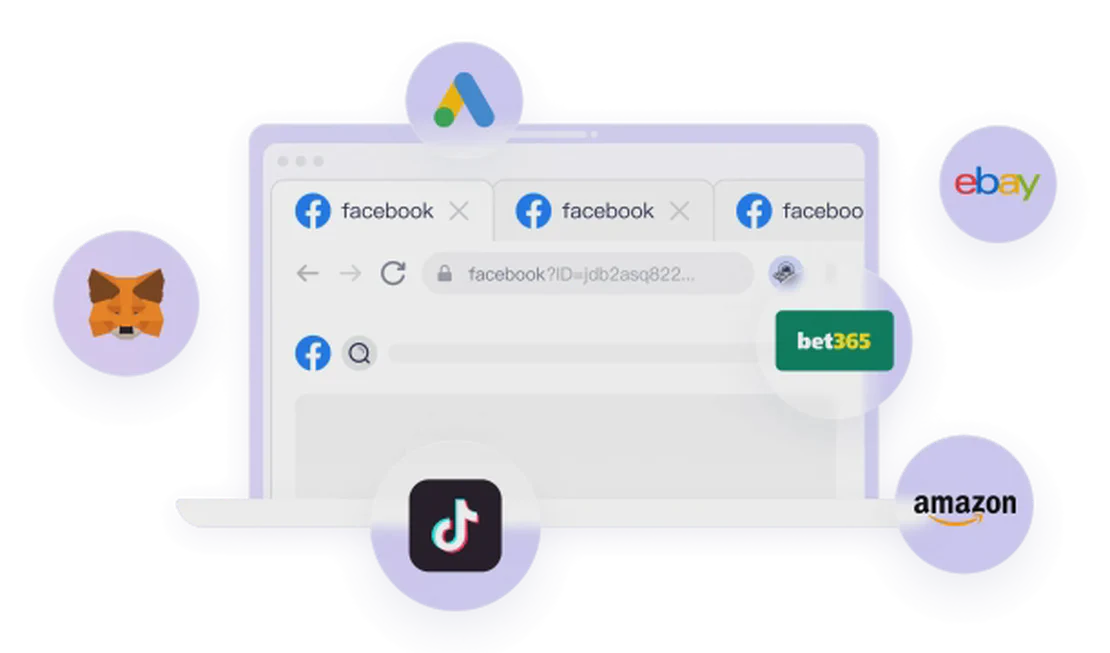1. What is IP in Browser Fingerprinting?
The IP address represents a unique identifier for a user’s internet connection, and plays a key role in device fingerprinting, risk scoring, and account association alerts.
While the IP is usually not collected directly via JavaScript, it is passed to servers through:
- HTTP request headers
- WebRTC and STUN requests (client-side visibility for remote IPs)
- WebSocket handshake data
- Backend server logs for session correlation
IP address fingerprint signals include:
- IP Type: Residential IP, IDC (Data Center) IP, ISP-proxy IP, Static, Mobile, or Dynamic.
- Geolocation: Determined by IP city/region/country — often cross-checked with JavaScript timezone and language settings.
- Network Classification: Whether the IP belongs to a known proxy, virtual machine, or cloud hosting provider.
→ Such information is used by detection models to identify attempts at user spoofing, multi-accounting, or traffic washing, and forward them to fraud scoring engines or risk-reputation deciders.
2. Common Types of IP Address Used in Fingerprinting and Multi-Account Contexts
2.1. IDC IP (Data Center IP)
- Assigned by cloud providers like AWS, Google Cloud, or Azure.
- Commonly associated with automation, data scrapers, bots, or proxy infrastructure.
- Highly scrutinized in advanced risk tools, as they appear non-human and are often flagged in KYC systems.
- Very good for testing, poor for bypassing advanced anti-bot or identity checks.
2.2. Residential IP
- Assigned by real Internet Service Providers (ISPs) to residential users.
- Seen as “natural” and “low-risk” in many fingerprint platforms.
- Harder to spoof, but preferred for use in multi-session, multi-account, or black-box environments.
- FlashID has support for profile-based residential IP bridging through custom proxies.
2.3. ISP / SOHO IP
- IPs used by small businesses or home setups with natural Internet connections.
- Can be classified as different from large botnet IPs, but still may carry usage traces.
- Ideal for medium-risk platforms, direct social logins (Instagram, Discord), or semi-automated tools.
2.4. Mobile IP
- Dynamic or carrier-assigned IPs used by mobile devices.
- Often show high entropy between sessions.
- Harder to simulate from desktop environments and frequently monitored on identity-sensitive sites.
- FlashID supports proxy-based spoofing, with a mobile-IP-like experience through configured cellular-gateway proxies.
2.5. Mixed Network or “Transparent” IP Addresses
- IP addresses obtained via shared networks, default proxies, or open routers.
- May be flagged for risk polluting or repeated device recognition because multiple users can share the same IP.
- FlashID isolates and customizes proxy inputs for each browser session to avoid this exact risk.
3. How FlashID Helps Mask or Switch IP Fingerprint Signals
FlashID does not imitate IP addresses directly (since it’s a network-layer property), but it provides tight integration with proxy settings, allowing you to:
3.1. Control the Exit IP Per Profile
- Every FlashID browser is run in an isolated profile environment, with its own set of proxy credentials or round-robin connections.
- Easily assign proxies from residential, mobile, or IDC sources and ensure each browser represents the correct exit IP fingerprint.
3.2. Support for Multiple Proxy Types
FlashID seamlessly supports:
- HTTP/HTTPS Proxies
- SOCKS4 / SOCKS5 Proxies
- Username/Password Authenticated Proxies
- Rotating Proxies (via 3rd-party services)
This ensures wide scenario compatibility — whether you’re combating retail KYC, evading ad networks, or managing social media growth strategies.
3.3. Auto-Region Fingerprint Logic in Proxies
When you assign a proxy:
- FlashID autochanges your timezone and location to align with the IP’s geolocation.
- It switches your preferred language, Accept-Language, and city-specific rendering cues to ensure consistency.
- Optional canvas WebGL fallback values may be updated to simulate device behavior within that location.
This delivers a plausible browsing environment, not just IP-level bypassing.
3.4. Environment Isolation
- FlashID’s browser sandboxing prevents shared cookies, TLS settings, memory leaks, or WebSocket connections between profiles.
- This ensures server-visible IPs remain distinct and that cookies/sessions don’t leak into the same connection chain.
3.5. Self-Configurable Proxy Interface
- FlashID comes with a built-in proxy configuration modal for each browser session.
- Easily edit proxy settings in your interface — no technical scripting or middleware installed.
- Test proxy connections in real-time and launch browsers only after successful cross-checks.
With these features, FlashID gives you the true freedom to mask and diversify your browser sessions’ network identity.
You May Also Like
